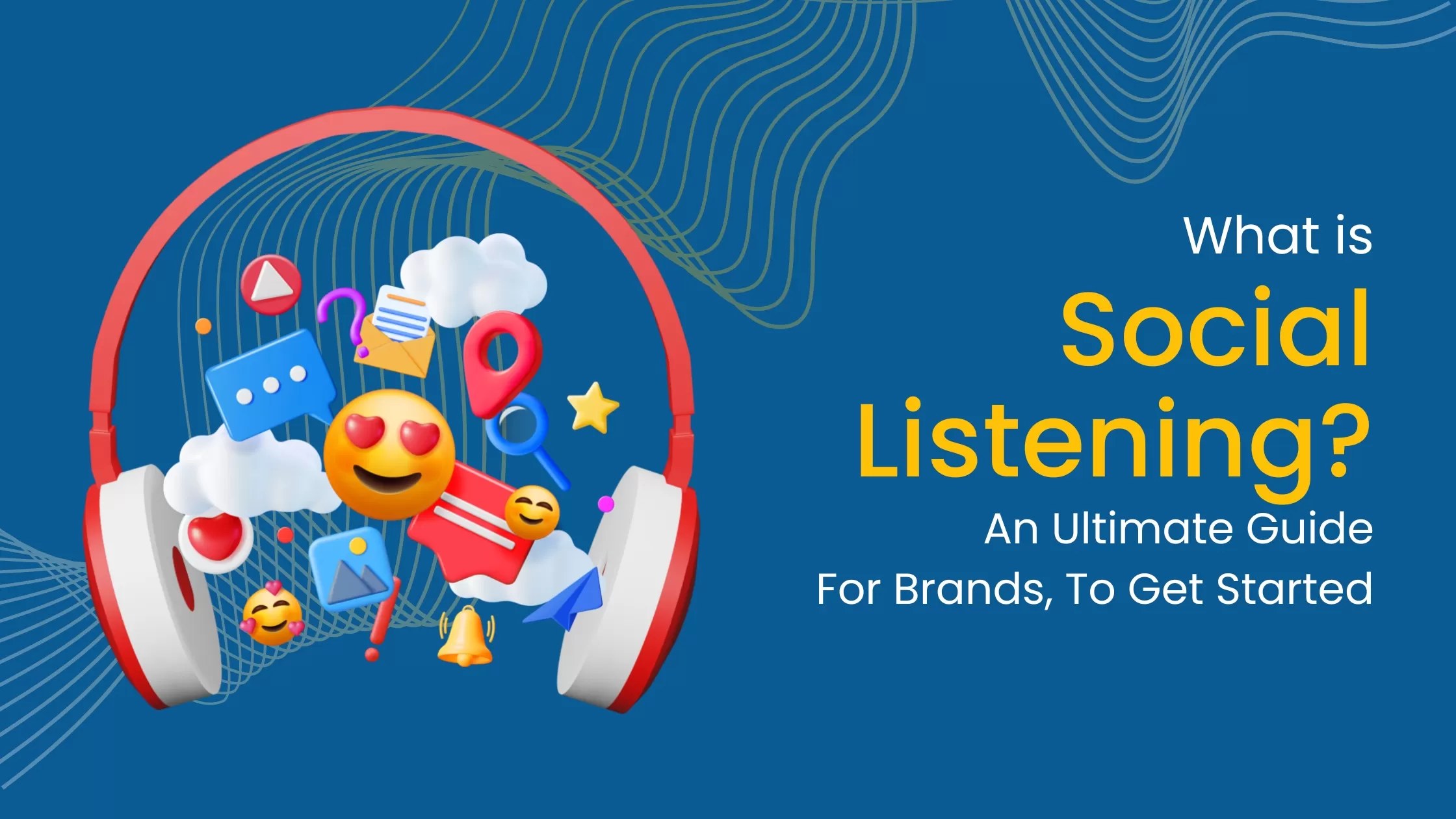In the digital age, social media has revolutionized the way businesses interact with their audience. With billions of active users worldwide, platforms such as Facebook, Instagram, Twitter, and LinkedIn have become powerful tools for brand building and marketing. This blog explores the impact of social media on branding and highlights how businesses can effectively leverage online platforms to enhance their brand presence and engage with their target audience.
1. The Rise of Social Media in Branding
Social media has transformed the branding landscape, offering businesses new avenues to connect with their customers. This section delves into the rise of social media platforms, their growing user base, and the reasons behind their popularity. It also highlights the unique opportunities social media provides for businesses to build their brand identity and reach a wider audience.
2. Building a Strong Social Media Presence
To leverage social media effectively, brands need to establish a strong online presence. This section discusses the key steps involved in building a compelling social media presence, including defining brand objectives, identifying target audience demographics, selecting appropriate platforms, and creating engaging content. It also explores the importance of consistent branding across different social media channels.
3. Engaging with the Target Audience
Social media platforms offer brands the chance to engage directly with their target audience. This section explores various strategies for fostering meaningful interactions, including responding to comments and messages promptly, running contests and giveaways, hosting live events, and using storytelling techniques. It also emphasizes the importance of personalized and authentic communication to build trust and establish brand loyalty.
4. Influencer Marketing and Collaborations
Influencer marketing has become a powerful tool for brands to amplify their reach and connect with their audience. This section delves into the concept of influencer marketing, exploring how brands can identify and collaborate with relevant influencers to promote their products or services. It also discusses the benefits and potential challenges of influencer partnerships
5. Social Listening and Reputation Management
Social media provides valuable insights into customer sentiment and feedback. This section highlights the importance of social listening, monitoring brand mentions, and proactively managing the brand's online reputation. It discusses tools and techniques for analyzing social media data, gathering customer insights, and addressing any negative feedback or complaints.
6. Measuring Social Media Success
To determine the effectiveness of their social media efforts, brands need to measure key metrics and analyze performance. This section explores various social media analytics tools and discusses essential metrics such as engagement rate, reach, conversion rates, and return on investment (ROI). It emphasizes the iterative nature of social media strategies and the importance of continuous monitoring and adjustment.
7. Paid Advertising on Social Media
In addition to organic reach, social media platforms offer businesses the opportunity to amplify their brand message through paid advertising. This section explores the different types of paid advertising options available, such as sponsored posts, display ads, and influencer collaborations. It discusses the benefits of targeted advertising, using demographic and interest-based targeting options to reach a specific audience effectively.
8. Social Media Trends and Emerging Platforms
Social media is an ever-evolving landscape, with new trends and platforms emerging regularly. This section highlights the importance of staying up to date with social media trends and exploring emerging platforms to reach new audiences. It discusses the potential of platforms like TikTok, Clubhouse, or Snapchat and how brands can adapt their strategies to leverage these emerging trends.
9. User-Generated Content and Advocacy
User-generated content (UGC) plays a significant role in social media branding. This section explores the benefits of UGC and how brands can encourage their audience to create and share content related to their products or services. It discusses the concept of brand advocacy, where satisfied customers become brand ambassadors, sharing positive experiences and recommendations with their social networks.
10. Social Media Crisis Management
Social media platforms can be both a blessing and a curse for brands, as negative feedback or crises can quickly spread. This section explores the importance of having a crisis management plan in place and discusses strategies for effectively managing and responding to negative situations on social media. It emphasizes the need for transparency, empathy, and swift action to mitigate the impact of potential crises.
11. Global Reach and Cultural Sensitivity
Social media platforms provide brands with the opportunity to reach a global audience. This section discusses the challenges and considerations of branding on a global scale, including cultural sensitivity, language barriers, and localization of content. It emphasizes the importance of understanding the target audience's cultural nuances and adapting branding strategies accordingly.
12. Evolving Social Media Algorithms and Organic Reach
Social media algorithms constantly evolve, affecting the organic reach of brands' content. This section explores the impact of algorithms on brand visibility and discusses strategies for maximizing organic reach through techniques like creating engaging content, leveraging hashtags, and encouraging audience participation.
Brands effectively using user-generated content (UGC) for branding
- GoPro:
GoPro, a popular action camera brand, has built its brand around user-generated content. They encourage their customers to share their adventurous and thrilling moments captured with GoPro cameras. GoPro features the best user-submitted videos and photos on their website and social media platforms, showcasing the incredible experiences and perspectives captured by their customers. This strategy not only promotes their products but also creates a community of passionate GoPro users who engage with the brand and inspire others to join the adventure
- Starbucks:
Starbucks has successfully utilized UGC to engage with their customers and create a sense of community. They often launch campaigns encouraging customers to share their Starbucks experiences using designated hashtags. Starbucks then curates and shares some of the best customer-submitted content on their social media channels, showcasing the diverse and creative ways people enjoy their beverages. This UGC approach helps Starbucks foster a personal connection with their customers and creates a sense of authenticity around their brand
- Airbnb:
Airbnb, the online marketplace for accommodations, has leveraged UGC to build trust and showcase the unique experiences available through their platform. They encourage hosts and guests to share photos and stories of their Airbnb stays and adventures. These user-submitted visuals and testimonials are prominently featured on Airbnb's website and social media platforms, allowing potential customers to see authentic experiences and gain confidence in booking through Airbnb. This UGC-driven approach has been crucial in establishing Airbnb as a trusted platform for travel accommodation
- Coca-Cola:
Coca-Cola has successfully incorporated UGC into their marketing campaigns, particularly during the holiday season. They encourage customers to share photos and videos of themselves enjoying Coca-Cola beverages during festive celebrations. Coca-Cola then uses this UGC in their advertisements, showcasing the joy and togetherness associated with their brand during special occasions. By featuring real people in their campaigns, Coca-Cola creates an emotional connection with their audience and reinforces their brand's values of happiness and shared experiences
- Adobe:
Adobe, the software company known for its creative tools, hosts various UGC campaigns to showcase the talent and creativity of their users. They invite users to submit their artwork, designs, or videos created using Adobe software. Adobe then features selected submissions on their website and social media platforms, highlighting the capabilities of their software and celebrating the creative achievements of their users. This UGC approach helps Adobe engage with their user community, inspire creativity, and reinforce their position as a leader in the creative industry
Conclusion
Social media has revolutionized the way brands connect with their audience, opening up new opportunities for engagement, brand building, and marketing. By understanding the impact of social media on branding and leveraging online platforms effectively, businesses can create a strong brand identity, foster meaningful connections, and drive success in the digital landscape. Embracing social media as an integral part of their branding strategy enables businesses to adapt to changing consumer behaviors and stay ahead in today's competitive market.
FAQ’s
Q: What is the significance of social media in branding?
A: Social media plays a pivotal role in modern branding. It allows businesses to connect with their audience, build brand identity, and leverage online platforms for growth.
Q: How can social media impact brand recognition?
A: Social media enhances brand recognition by increasing visibility, creating engagement, and fostering a positive brand image among a wider online audience.
Q: What are some effective social media branding strategies?
A: Effective strategies include consistent posting, content relevance, engaging with followers, utilizing the right platforms, and monitoring and responding to feedback.
Q: How can I leverage online platforms for brand success?
A: Leveraging online platforms involves using social media channels, online advertising, content marketing, and influencer partnerships to build a strong online presence and enhance brand value.
Q: What is the role of social media in online reputation management?
A: Social media allows brands to monitor and manage their online reputation by responding to customer feedback, addressing issues promptly, and showcasing positive experiences.
Q: Can social media influence brand identity and customer loyalty?
A: Absolutely. Social media helps shape brand identity through storytelling, and it fosters customer loyalty by creating a sense of community and trust.
Q: What are the key metrics for measuring the impact of social media on branding?
A: Metrics include engagement rates, follower growth, click-through rates, conversion rates, social share of voice, and sentiment analysis.






